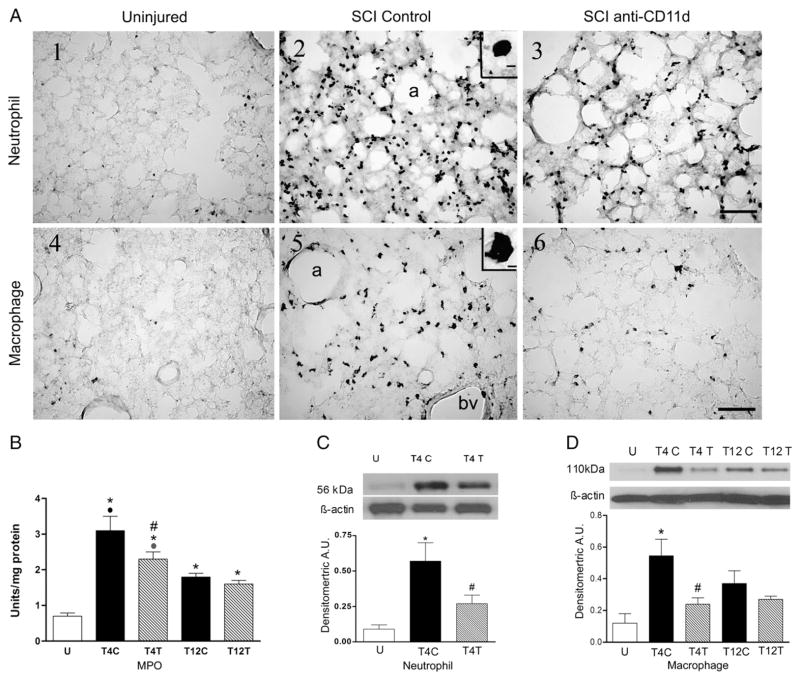Fig. 1.
The anti-CD11d treatment decreases neutrophils and macrophages in the lung at 12 h after SCI. A) Photomicrograph of lung sections immunostained by an anti-neutrophil antibody (panels 1–3) and by an ED-1 antibody to detect macrophages (panels 4–6) from an uninjured rat, a T4 SCI control rat and a T4 SCI rat treated with the anti-CD11d mAb (SCI anti-CD11d). Insets in A2 and A5 show high power detail of stained cells. a, alveolus; bv, blood vessel. Scale bar=100 μm in A3 (applies to A1–3) and A6 (applies to A4–6) and 10 μm in insets. B) MPO activity in lung homogenates from T4 and T12 SCI rats (n=5 per group) and from uninjured rats (n=6). C) Neutrophil protein, identified by Western blotting in lung homogenates from uninjured and SCI rats (n=5, all groups) expressed in arbitrary units (A.U.). A representative autoradiogram of a Western blot showing relative protein expression, compared to loading controls (β-actin), is shown above the bar graph. D) Macrophage protein (ED-1) expression (Western blotting) in lung homogenates from uninjured and SCI rats (n=4, SCI controls; n=5, uninjured and anti-CD11d treated). In this and all figures: values are means±S.E.; symbols indicating significance refer to the ‘a posteriori’ Student Neuman Keul’s test for all comparisons (P≤0.05) *, significantly different from uninjured; #, significantly different from SCI control; ●, significantly different from T12 SCI control.
 , tended to differ from T12 SCI anti-CD11d treated. U: uninjured; T4C: T4 SCI control; T4T: T4 SCI anti-CD11d-treated; T12C: T12 SCI control; T12T: T12 SCI anti-CD11d-treated.
, tended to differ from T12 SCI anti-CD11d treated. U: uninjured; T4C: T4 SCI control; T4T: T4 SCI anti-CD11d-treated; T12C: T12 SCI control; T12T: T12 SCI anti-CD11d-treated.

